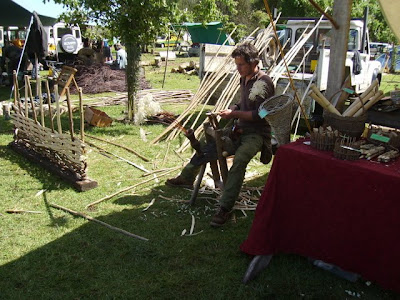 My ingredients are:-approx. 30 large flower heads (shaken to remove bugs), a kilo bag of sugar, 3 unwaxed lemons, approx 50g of food grade Citric Acid (available from chemist's but I got mine from ebay- didn't cost much) and 3 pints of boiling water.
My ingredients are:-approx. 30 large flower heads (shaken to remove bugs), a kilo bag of sugar, 3 unwaxed lemons, approx 50g of food grade Citric Acid (available from chemist's but I got mine from ebay- didn't cost much) and 3 pints of boiling water. Dissolve the sugar in the boiling water in a large bowl or pan; finely grate the rind of the lemons and add , along with the citric acid, to the syrup; thickly slice the rest of the lemons and throw them in; finally add the flower heads (snip as much of the stalks off behind the flowers as possible) ; cover and leave to steap for 48 hours.
Dissolve the sugar in the boiling water in a large bowl or pan; finely grate the rind of the lemons and add , along with the citric acid, to the syrup; thickly slice the rest of the lemons and throw them in; finally add the flower heads (snip as much of the stalks off behind the flowers as possible) ; cover and leave to steap for 48 hours. After 48hrs fish out the solids and strain through some muslin or laundered cloth into sterilized bottles. Apparently it keeps for a good month if stored cool or can be frozen in plastic bottles.
After 48hrs fish out the solids and strain through some muslin or laundered cloth into sterilized bottles. Apparently it keeps for a good month if stored cool or can be frozen in plastic bottles.I was pleasantly surprised by how nice it tastes after initially sniffing the flowers with low expectations. I have read it goes well with Sloe Gin so I think I'll give it a try.
Cheers John








 On the far right and left of the above picture is the blossom of Wild Cherry trees. Here's a close up of the Elm fruits.
On the far right and left of the above picture is the blossom of Wild Cherry trees. Here's a close up of the Elm fruits. 





































